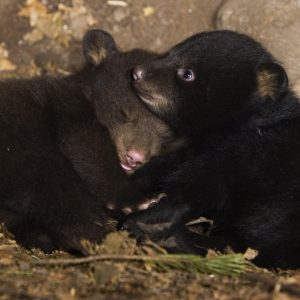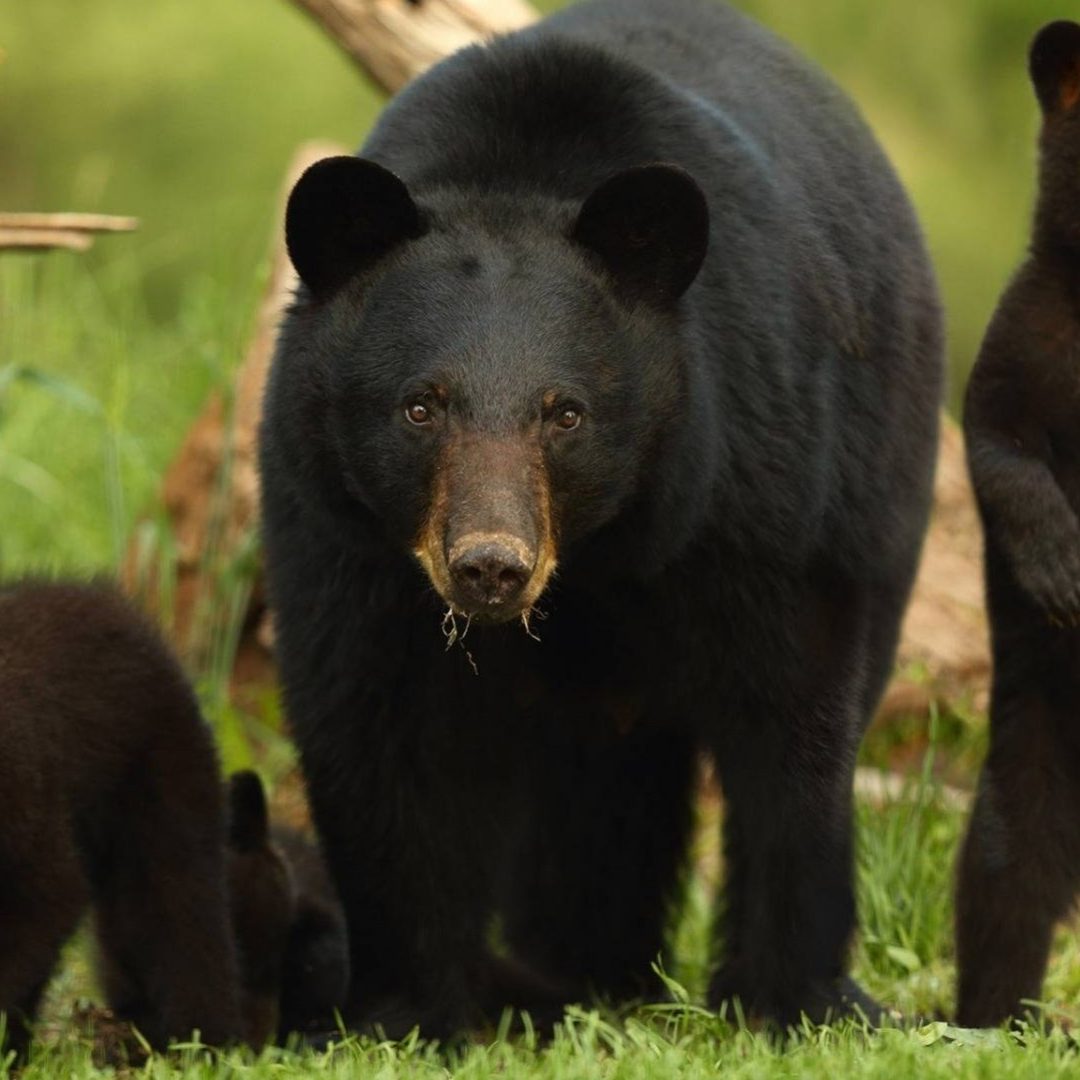



Did you know?
Since the 1980s, the black bear population has been expanding along with our human population. Florida has grown from 5 million residents in 1960 to 20 million today and is projected to reach almost 36 million by 2060. Urban sprawl is encroaching on traditionally remote areas, bringing people into prime bear habitat. As a result, bears and people are encountering each other more than ever.
The mere presence of a black bear does not represent a problem. In fact, living in black bear country can provide unique and rewarding experiences! The best way to enjoy our wildlife is to keep them wild and away from food sources like garbage, pet food, and bird seed.

Florida Black Bear Cheat Sheet
Here are some quick facts you should know about bears. For more information, see the above links!
- Black bears are the only species of bear found in Florida.
- FWC biologists estimate that there are approximately 4,050 black bears in Florida.
- Adult male black bears usually weigh between 250 to 350 lbs. The largest adult male black bear in Florida weighed 760 lbs. Adult female black bears are smaller than males, usually weighing between 130 and 180 lbs. The largest adult female black bear in Florida weighed 460 lbs.

- Adult male black bears usually live within a 60 square mile area, whereas females usually live within a 15 square mile area.
- Female bears have their first litter at about 3 ½ years old and generally have a litter every other year.
- In Florida, the breeding season runs from June to August and cubs are born around late January or early February.
- Bears are excellent climbers and often climb trees when they are frightened.
- About 80 percent of a black bear’s diet comes from plants (e.g., fruits, nuts, berries), 15 percent from insects (e.g., termites, ants, yellow jackets) and 5 percent from meat (e.g., opossums, armadillos, carrion.

Habitat Division and Roads
Roads, large urban agricultural development can be major barriers for all kinds of wildlife from bears, bobcats, frogs and everything in between. Wild areas are carved up and split into smaller pieces often caused by human development. If not planned correctly, habitat division can occur.
Habitat division limits movement thereby impairing some animal’s ability to find food, shelter and mates. Populations get isolated, sensitive species go extinct, and key ecological process like plant pollination can be lost forever. Birth defects, reproductive problems, and vulnerability to disease happens when populations are isolated too long.

It is critical that these core protected areas such as the Ocala National Forest the heart of the Florida Black Bear Scenic Byway be connected by corridors/wildlife crossings, natural areas that connect patches of habitat which allow animals to move freely across all landscapes.

Across the United States a collision with some form of wildlife occurs on an average every 39 minutes.
725,000 to 1.5 million wildlife collisions annually.
From 2000-2006, wildlife related crashes in the US have claimed 2,307 human lives and over 1 million dollars in property damage.

We are a volunteer organization whose goal is to help Florida Wildlife “get to the other side safely” by supporting the perseverance of the Florida Black Bear Scenic Byway and by lobbing and advocating the building of more safe passages, and multi use trails. We are optimist that our efforts will ensure that Florida’s wildlife will continue for generations to come.